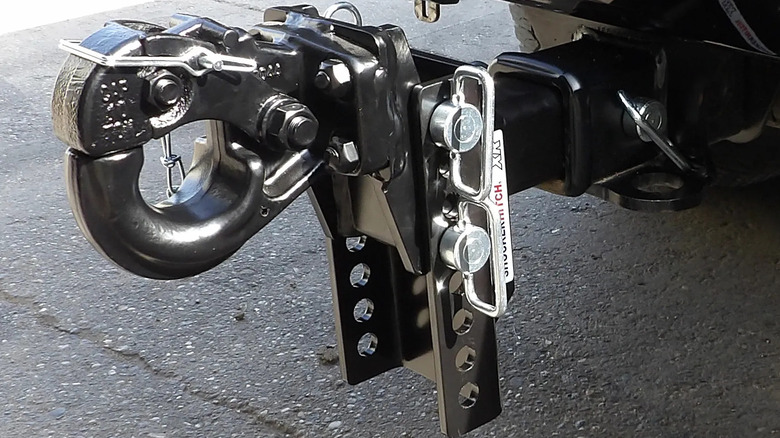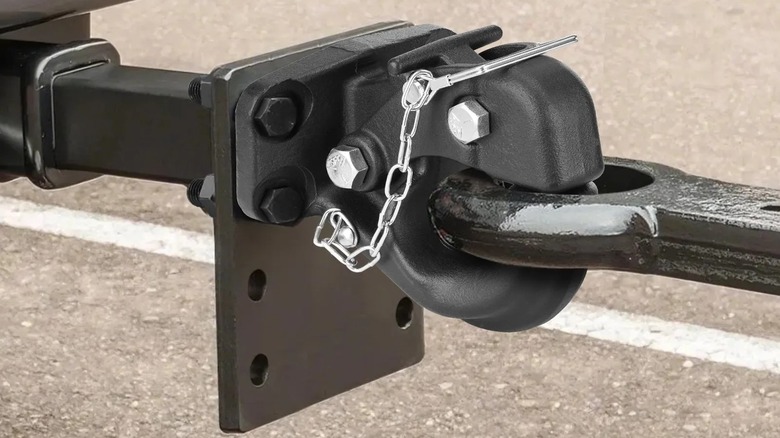What Is A Pintle Hitch? A Look At Its Pros & Cons For Towing
One of the major reasons why outdoor enthusiasts might decide to go with a practical towing titan is their ability to pull heavy loads. But just because a vehicle might be made for maximum towing capacity, it doesn't mean that it can safely or efficiently tow without the right accessories. Upgrading the powertrain and elongating the wheelbase will help improve your truck's towing prowess, but there are other towing accessories that can empower you to tow heavy trailers with confidence, and one crucial piece of the towing puzzle is the hitch. There are different types of tow hitches, each with different applications.
When it comes to towing bulky weight, one of the most prominent options is the pintle hitch. Commonly found on military vehicles, a pintle hitch is a two-piece towing system that includes a pintle (a hook that's usually mounted onto the truck) and a lunette ring. When combined, the two parts often create an extremely strong bond, ideal for heavy-duty towing. Plus, their flexible connection makes them the best towing hitches for pulling heavy cargo over sharp turns. That's why you'll probably see them attached to agricultural machinery and construction fleets, as well as military trucks.
Perks of equipping your truck with a pintle hitch
Whether a pintle hitch is ideal for towing or not generally depends on how you plan to use your towing vehicle. And if your towing entails pulling heavy campers over uneven surfaces, a pintle hitch will offer numerous perks. Sure, you might consider a gooseneck hitch or a 5th wheel hitch, but if you have an SUV, they will be clearly out of the picture, as they'll only fit on the bed of a pickup truck.
One of the main perks of pintle hitches is their ability to provide sheer strength. Unlike a bumper hitch that's designed to tow up to 6,000 pounds, a pintle hitch is capable of enduring heavier loads of around 10,000 pounds. If your car has impressive towing capacity and an array of advanced towing accessories, that capacity can even push further to 20,000 pounds or more. Another benefit of pintle hitches is the superb articulation they provide. When you connect the lunette ring onto the hook, the loop will rest inside the pintle. This will create room for the hitch to move freely (both vertically and horizontally). That means that the trailer will track efficiently and safely behind the towing vehicle, irrespective of the terrain, and without stressing the hitch connection.
Potential drawbacks of equipping your truck with a pintle hitch
Despite offering immense strength and durability, the pintle hitch has a few downsides. For instance, most people usually complain about its ride quality. Unlike ball hitches that offer a secure and snug fit between a towing vehicle and a trailer, pintle hitches typically leave room for movement. And while this might make them ideal for towing on uneven terrain, the loose connection could create banging and rattling noises that could be annoying during long hauls.
Also, the installation process matters a lot. Some people might prefer standard ball mounts as they are easier to install and operate than pintle hitches. In fact, if you're attaching the trailer solo, hooking up a pintle hitch might be challenging, due to its complexity and the need for precise alignment. Plus, attaching the pintle and lunette ring could take time, which could be frustrating, especially when you're working against the clock.


